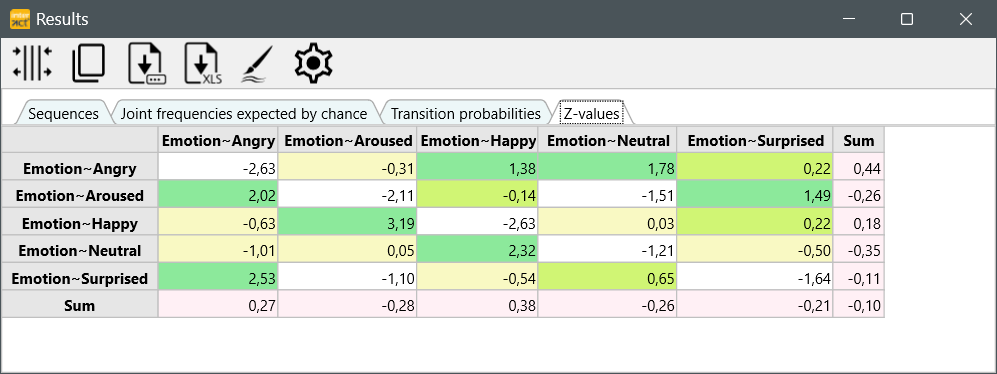Z scores or Z-values are measures of standard deviation. Those values are used to identify which transitional probabilities deviate significantly from their expected values. For example, if a tool returns a Z score of +2.5 it is interpreted as "+2.5 standard deviations away from the mean".
As for all statistical routines, this also means those values should only be interpreted with large numbers of Events!
Z-values may be computed in a variety of ways, but in all cases it has the merit of expressing the extent to which an observed value for a conditional probability differs from its expected value.
Those values are not good candidates for parametric analyses. If the number of tallies in the appropriate cells doubled but the association remained the same, the z-value would increase.
IMPORTANT:Only if the total number of Events is the same for all participants, z-scores can be can be compared across study units!
Z-values Results
The Z-values in INTERACT are based on the formula in this book:
Observing interaction: An introduction to sequential analysis
(Second edition)
Roger Bakeman - Georgia State University
John M. Gottman - University of Washington
Cambridge university press
The values calculated according to this paper can be found on the third tab:
 .
.IMPORTANT: If too many cells show a zero, although there were sequences found for some of the Codes, you need to increase the Floating point precision, within the Timeline Chart settings.
As stated before the method used has been designed for data in which consecutive codes may repeat (equal repetitive codes are possible).
If your data relies on structural zeros on the diagonal because consecutive codes may not repeat, the expected frequencies cannot be computed with this method. For this type of data it is best to use a program called GSEQ, which offers an import routine for INTERACT data files.
Note: Calculation details can be found in Z-Values Calculations, in the INTERACT Help.